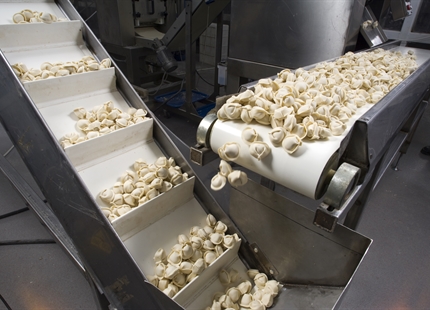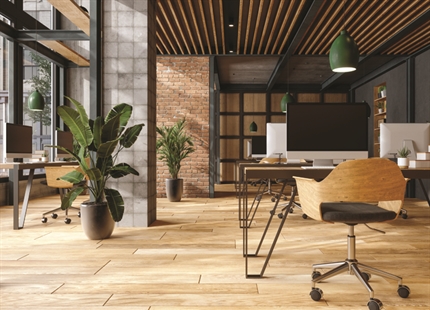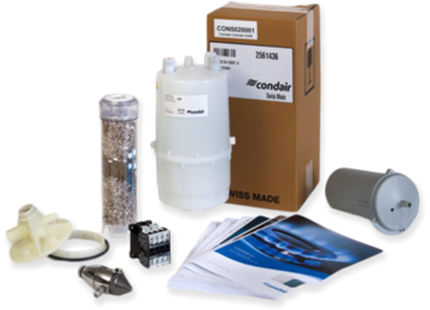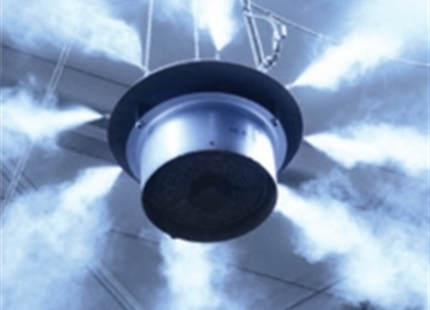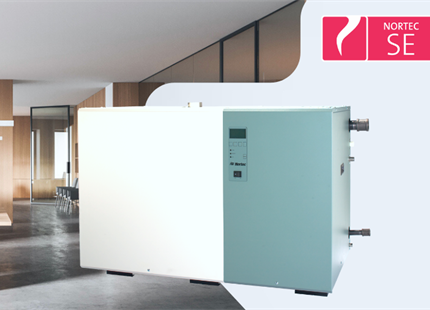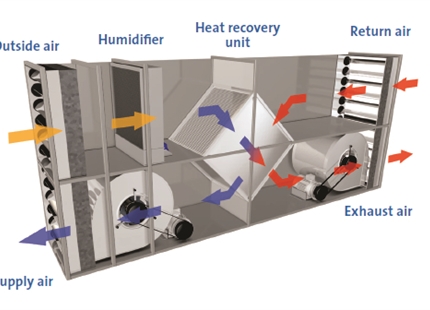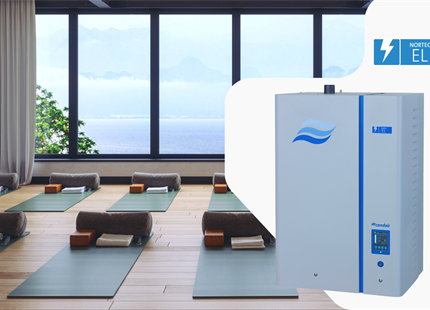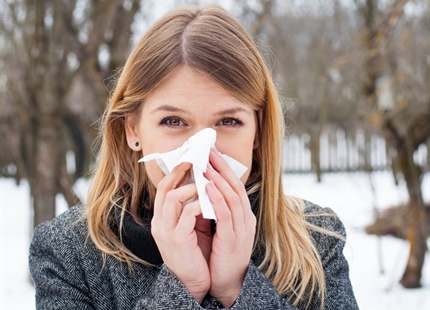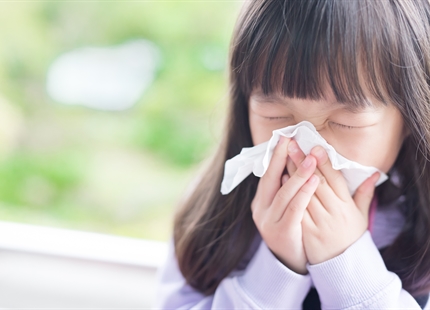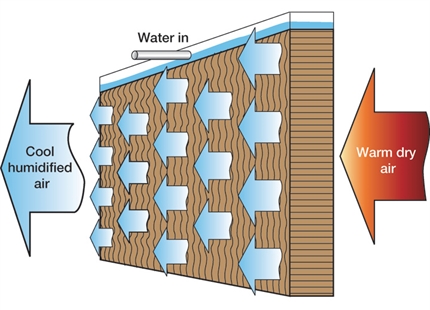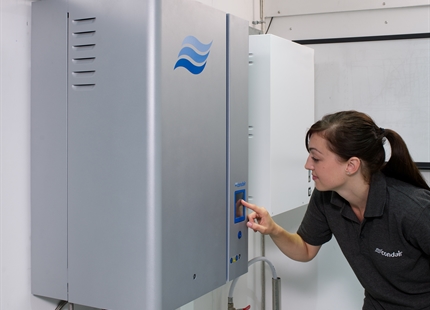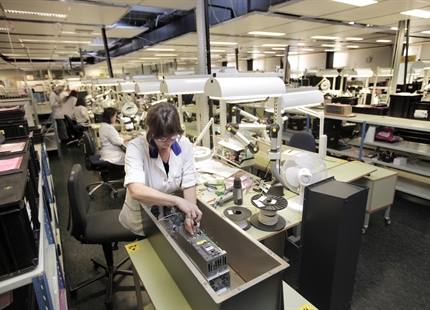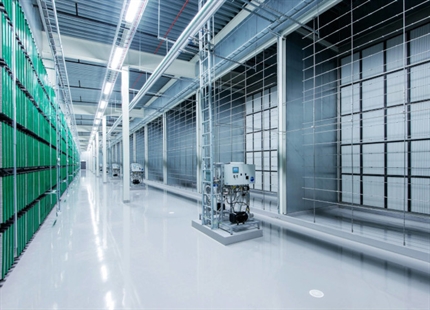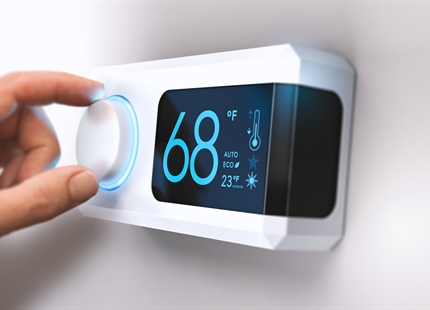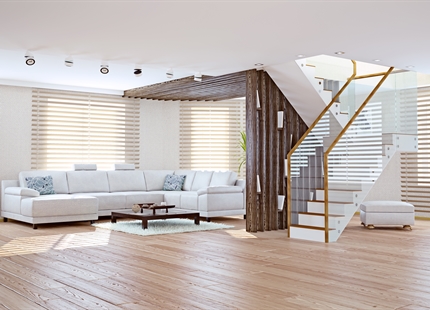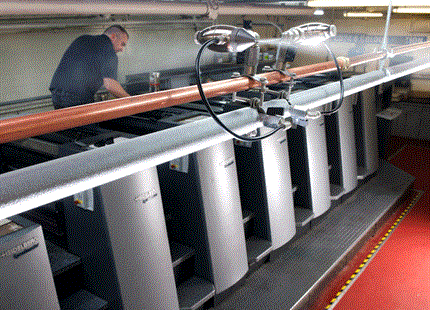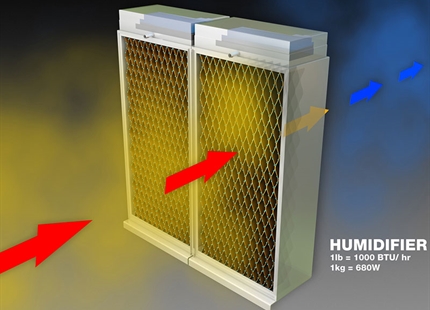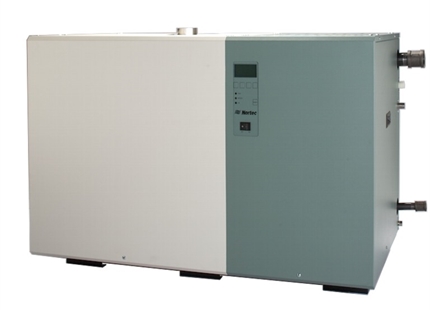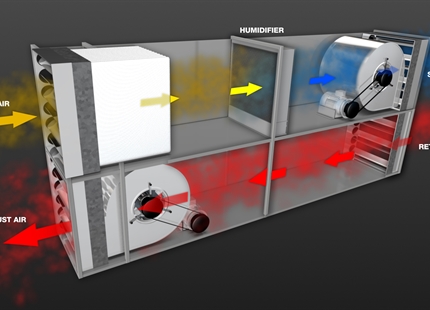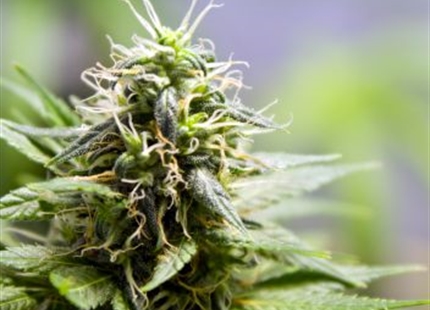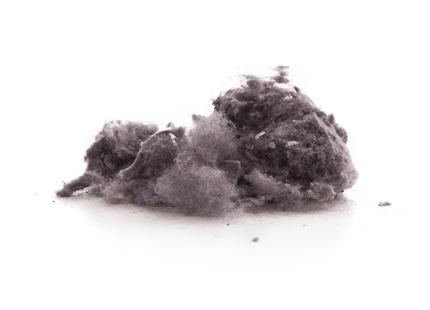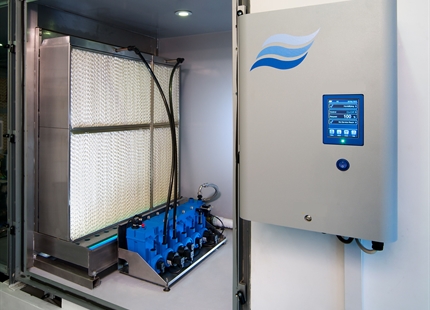Condair's Blog - Check back often for new posts.
Condair humidifiers and evaporative cooling systems have been helping improve productivity and health in many commercial and industrial applications throughout the World for over 70 years.
Use Cases for Proper Humidity Control: Woodworking to Warehousing
Today, in our blog entry, let’s spotlight some of the applications that benefit most from a dedicated humidity control system.
More informationDehumidification for Food Processing: Why it Matters
Has the product and its packaging been correctly looked after? What were the storage conditions like? These are just some of the questions we hear at Condair, and the solution is a simple one: dehumidification technologies are essential.
More informationCondair's Healthy Building Solutions Checklist: How Does Yours Stack Up
At Condair, we love helping our clients optimize their building operations. Health, like safety and production efficiency, is a significant factor to consider. Not only is good airborne infection control essential towards helping your team’s health and performance, it can also protect other visiting building occupants.
More informationReimagining Buildings: Rethink and Refit for Airborne Infection Control
Modern building constructions and renovations can offer significant benefits to building occupants. They can be healthier, cleaner, and far safer when the right strategies and precautions are implemented. However, maximizing airborne infection control in healthcare settings, as well as other applications, can be complicated.
More informationAssisted Living Facilities: Our Healthy Living Checklist
Assisted living environments such as long-term care homes require specialized services and focuses.
More informationThe 40-60 Rule - Why Relative Humidity is Necessary for Our Health
Managing a happy, healthy household can present challenges, especially if your indoor air quality is less-than-deal, temperatures regularly fluctuate, and conditions are either too dry or damp.
More informationWhy Indoor Spaces Need Proper Humidity Control: An Overview
At Condair, we have been researching, developing, and modernizing control solutions for indoor humidity for decades. In that time, we’ve developed a comprehensive understanding of why indoor spaces need proper humidity control and would like to share this information to managing facilities across a wide range of applications.
More informationEnsure Wind Energy Manufacturing Consistency with Humidity Control
Wind energy production requires utmost efficiency and consistency in order to remain a viable and effective means of green energy production, and this extends right back to the manufacturing process.
More informationNeed New Cylinders? Check with Your Humidifier Manufacturer
Ordering authentic, reliable Condair parts such as a cylinder for your system has never been easier. All you need to do is visit condairparts.com, our authentic humidifier parts store.
More informationHow to Avoid Electrostatic Discharge and Protect Your Business
ESD – short for electrostatic discharge – is no joke to business owners; it’s a very real and present danger in indoor environments with inadequate humidity control.
More informationAll You Need to Know About Direct Room Spray Humidifiers
From printing and packaging to manufacturing and more, direct room spray humidifiers are an excellent alternative if certain spaces are giving you relative humidity headaches.
More information7 Benefits of Steam Humidifiers
Excessive humidity can be as equally destructive and negatively impactful as too little. Therefore, it is imperative that temperature and humidity levels are efficiently regulated to ensure favorable living and working conditions.
More informationWhat is the Best Humidity for Baking, and Why?
To optimize your operations and produce the freshest, longest-lasting baked goods possible, proper humidity control is essential.
More informationDirect vs. Indirect Evaporative Cooling: What’s the Difference?
Condair delivers state-of-the-art, high-efficiency evaporative humidifier solutions to suit a variety of applications and subsequent load sizes.
More information4 Negative Performance Effects of Low Humidity in the Workplace
Being good to your workers can translate to being good to your profit margins. However, without indoor environmental conditions effectively managed, there are a number of complications that can arise.
More informationCondair EL Series Steam Humidifiers for Hot Yoga
We have carefully and meticulously consulted with hot yoga studios, fitness professional, and athletic building managers around the world to gain a deeper understanding of the ideal hot yoga studio environment.
More informationElder Care and Humidity: Setting Standards to Protect Residents
Maintaining proper indoor relative humidity control – between 40 to 60 percent – is ideal for protecting senior residents from a number of health and wellness issues.
More informationWhy Relative Humidity Control Benefits Airborne Infection Control
During these difficult times, it makes sense to be proactive about your indoor airborne infection control strategy. This is especially true for daycares, hospitals, elder care facilities, and other similarly sensitive environments.
More informationWhat are Acceptable Humidity Levels in Office Buildings, and Why?
Picture yourself at a desk for eight or more hours a day, fluorescent lights whirring above your head and the air dry to the point where you experience discomfort and can’t focus as well as usual. Alternatively, perhaps the air is too heavy with moisture, resulting in your team encountering breathing difficulties.
More informationHow Data Center Cooling Works, the Condair Way
Today’s data centers face a plethora of challenges. Whether keeping servers and connected computer systems updated or ensuring a secure, clean and cool operating environment, it’s important to run a tight ship.
More informationHow the Moisture Content of Cheese Affects the Curing Process
In our decades of experience in such applications, we’ve learned a lot about how cheese curing is directly influenced by relative humidity control. Today, let’s take a look at how the moisture content of cheese can affect the efficiency of this process.
More informationMushroom Mania: Why Invest in Commercial Humidifiers for Grow Rooms?
For all mushroom enthusiast, whether a hobbyist or a business opportunist, growing mushrooms can be challenging. Why? For the mushrooms to successfully bear fruit, a delicate balance of light, carbon dioxide (CO2), temperature, and humidity are needed.
More informationWhy Controlling Indoor Humidity in Winter Conditions Matters
Airborne infection control is never more important than during the dreaded flu season. Let’s explore in detail why controlling indoor humidity in winter conditions matters so much!
More information5 Electrostatic Discharge Consequences on Technology
We use technology more and more every day – in fact, more than we may realize. That leaves us open to the risk of electrostatic discharges in low-humidity conditions. In such environments, energy can accumulate on conductive surfaces and arc dangerously to other objects.
More informationTake Control of Influenza Outbreaks with Proper Humidification
The spread of Coronavirus around the world is unsettling, to say the least. At Condair, we know how critical it is to prevent that spread as much as possible, and the right airborne infection control strategy can potentially save lives in the long run.
More informationDiscover These Air Humidifier Benefits for Commercial Applications
Whether managing multiple floors of office workers, grocery stores full of highly sensitive produce or otherwise, respecting the air quality means your operational efficiency will benefit as a direct result.
More informationWhat Does a Humidifier Do to Benefit Tourism Applications?
Tourism is an industry built on the backbones of three key principles: Comfort, safety, and value. In order to provide the ultimate experience to guests while also taking good care of employees operating locations, keeping your indoor environment under control is essential.
More informationHumidity and Wood Furniture: 4 Potential Effects
Do you manage a concert hall, oversee production at a hardwood flooring manufacturer or build custom wooden furniture for clients? Regardless, you’ll know the impact indoor relative humidity can have.
More informationHow Indoor Air Quality Affects Employee Happiness in the Workplace
Your employees work hard, but they shouldn’t crash hard. Such is usually the case in environments with poor indoor air quality, largely influenced by overly low or high relative humidity.
More informationWhich Applications Benefit from the Evaporative Cooling Process?
Evaporative cooling is a powerful, innovative technology aimed at not only improving indoor conditions but also lowering operating costs.
More informationHumidification Benefits for Hot Yoga Studios
Whether you operate a hot yoga studio or frequent one as a client, it’s important that you can trust the quality of the air in such an environment.
More informationSurprising Effects of Humidity on Healthcare Efficiency
There are many healthcare-associated applications out there, from laboratories to hospitals and nursing homes, and they all share one key demand: Good air quality.
More informationWhy Upgrade to a Modern Humidifier?
Let’s say that your business has been using an older humidifier for years at this point. It’s likely that you’re not getting the most out of it anymore.
More informationThe Importance of Infection Control in Nursing Homes
Senior citizens are among the most at-risk individuals for contracting an infectious illness, particularly those such as influenza. Such illnesses can often be fatal on immune systems that have weakened over time.
More informationHow Humidity Control Reduces Failure Rates in Equipment
Perhaps you operate a sprawling data center and need to keep your servers in full working order, reliable as ever. Or, maybe you head an in-demand assembly line timed down to the second. Regardless, you deserve equipment that can stay reliable, performing at is peak and in need of as little maintenance as possible.
More informationHow Does Air Pollution Affect the Elderly, and What Can be Done About it?
Senior citizens do not have it easy when it comes to immune system strength and wellbeing in polluted environments. It’s therefore important to consider that, from healthcare environments such as hospitals to nursing homes and elsewhere.
More informationHow Does Humidity Control Affect Animals and Humans in Veterinary Clinics?
Whether you operate a veterinary clinic or are simply concerned for the well-being of your beloved pet, it’s important to know that the quality of the air affects animals much in the same way as humans.
More informationHere’s How Air Quality Affects Your Immune System
The human body is mostly comprised of water, but that doesn’t always mean you can count on your workers to keep themselves sufficiently hydrated on their own; the environment itself plays a role.
More informationHere’s Why Crops Need Humidity Control
Regardless of whether you’re responsible for crop-growing operations or wonder how the freshest produce reaches your retail operations, there’s no denying the role that proper humidity control plays. Spoiler alert: It’s downright essential!
More informationHumidity and Office Fatigue: What’s the Connection, and How can You Help?
Are your employees having a hard time staying focused, feeling exhausted and appearing to lack energy? This is a pathological state that can be directly influenced by the surrounding environment.
More informationBenefits of Humidity Control for Your Employees
Lets explore some benefits of humidity control for your employees in respects to their energy, mental wellness and alertness.
More informationBenefits of Evaporative Cooling for Commercial Applications
Maintaining the right indoor temperature as well as relative humidity goes a long way in achieving ideal results for many commercial applications, and it’s where evaporative cooling humidifiers really shine.
More informationWhy Indoor Air Quality in Healthcare Facilities is So Important
We’re currently in the middle of the flu season, and it goes without saying that we need to be extra careful at this time of year when it comes to protecting ourselves and others. During such a time as this, poor indoor air quality in healthcare facilities can make a single instance of illness flash through a building, resulting in a breakout.
More informationThe Relationship Between Humidity and Airborne Allergies
If you live in a seasonal climate, it’s likely that you’re more than ready for spring to come along, especially after the brutal winter many of us have endured. However, a lot of us are unaware of the fact that allergic reactions are influenced by indoor conditions.
More information4 Humidity Control Methods Used in Modern Building Designs
Today’s new building projects offer technical breakthroughs that are light years ahead of older structures. From homes to family-run businesses and sprawling industrial plants, there’s a lot of change in the air.
More informationHow Humidity Control Protects Data
Are you responsible for a high-tech data center? Or, have you been encountering electrostatic shock issues at the office? Regardless, keeping your information safe is critical to maintaining peak operational efficiency.
More informationWhy Does Low Humidity Cause Static Electricity?
Regardless of whether you’ve experienced a nasty shock or stressful computer failure from a short-out, it’s likely that you know how dangerous an electrostatic discharge can be. Detrimental to your safety, comfort and even productivity, it is directly influenced by the air moisture content – otherwise known as relative humidity – within an indoor environment.
More information5 Benefits of Enhanced Humidity Control for Electronics Manufacturing
Whether you operate a business that produces televisions, computer parts or other electronics, the environment your workers and products are exposed to can effectively make or break your business. Operations need to be maintained for consistent quality control, increased efficiency and minimal wastage.
More informationHumidity Control and the Importance of Preserving Artifacts in Museums
Museums around the world rely on more than security and plenty of large, open space to store and display cherished artifacts — the very air we breathe has an impact on them as well, for better or for worse.
More informationWhy Your Influenza Outbreak Management Plan Should Focus on Air Quality
Whether in the field of healthcare, education or otherwise, airborne infection control is an important element of keeping building occupants happy, healthy, and safe. Many of us aren’t aware of the connection between air quality, relative humidity, and influenza prevention efficiency.
More informationWhy Workplace Air Quality Testing Matters
There are a number of factors that can contribute to the well-being of building occupants put at risk by the very air that they breathe. This is especially true for manufacturing environments where an industrial humidifier with evaporative cooling can serve as a proactive, high-efficiency solution.
More informationHere are 6 Poor Air Quality Symptoms in Your Workplace
No matter whether you work away in an office cubicle, oversee a production floor at a factory, or otherwise, there is no denying the importance of clean, healthy air. If there are poor air quality
More informationWhat Can Low Humidity Do to Your Skin?
If someone suffers from issues with their skin, often they may blame it on genetics. However, low relative humidity is often a cause of many problems when it comes to our skin, which can sometimes lead to infections and chronic disorders.
More informationWhat’s the Best Humidity Level for Musical Instruments?
Whether you’re enjoying a symphony performance, taking part in creating one or overseeing the production, proper humidity control still takes center stage.
More informationWhat Should the Humidity be in a Classroom, and Why?
If you’ve ever been trying to focus in a classroom environment and find it difficult to do so, don’t necessarily blame yourself. It could be a sign of imbalanced relative humidity –—a fact that is easily ignored and often not addressed.
More informationLearn How to Control Humidity This Winter with These Tips
Winter is well and truly here, which means you may be wondering how to maintain established air quality conditions if you operate a business.
More information4 Benefits of Laboratory Humidity Control Systems
Laboratories are delicate mini-ecosystems that require precise control of atmospheric conditions. Therefore, an evaporative humidifier is used for proper environmental control.
More informationExploring the Relationship Between Humidity and Temperature
There is a strong connection between relative humidity (RH) and air temperature. Commercial humidifiers, industrial humidifiers, and evaporative coolers are ideal ways to balance out working conditions to make them as comfortable as possible for this reason.
More informationWant to Save on Energy Bills? Here’s How!
Whether you’re a small start-up or responsible for managing hundreds of employees, we can all agree on one thing: energy bills are often too high.
More informationFeeling Dehydrated at Work? Here’s What You Can Do
Whether you work in retail, a factory, or an office environment, from time to time, it’s normal to feel a little worn out. However, if you find yourself feeling regularly dehydrated, it can negatively impact your ability to focus, stay healthy, and maintain a robust immune system.
More informationProtecting Hardwood Flooring with Proper Humidity Control
Natural hardwood flooring is incredibly beautiful and highly resilient, as long as its surroundings receive the right amount of relative humidity! To protect such an investment and enjoy your flooring for many years to come, proper humidity control is a must.
More informationHot Yoga Temperature: How to Avoid Dry Air
Hot yoga temperature is directly influenced by the relative humidity (RH) in the studio, which plays a critical role when it comes to occupant health and wellness. Using the latest technologies and implementing a few tweaks can make a big difference if you happen to have a space that suffers from dry air.
More informationCommercial Humidifiers and Industrial Humidifiers: Why are they so Important?
No matter what kind of business you operate, it thrives on an environment fit for human occupation that encourages wellness. Regardless of whether you’re interested in commercial humidifiers, industrial humidifiers, or even features such as evaporative coolers, the impact of such systems on any environment is massive.
More informationInspect Your Ventilation and Airflow
The way air flows in and around your workplace is essential to battling dust accumulation.
More informationHow to Keep Warehouse Employees Cool
In the industrial world, it’s essential that your employees can handle the pressures and responsibilities of such intensive work. However, you could experience stunted productivity and efficiency if your team isn’t kept cool enough.
More informationWhat Baking Bread in Low Humidity Does to Your Products
Whether you operate a small-scale, family-run bakery in town or own multiple production facilities around the world, baking bread is a serious business when it comes to quality control. In addition, it comes with serious production and storage requirements involving proper humidity control and temperature regulation.
More informationHealthcare-Associated Infections (HAIs): What You Need to Know
Hospital and healthcare environments are breeding grounds for invasive bacteria if proper atmospheric conditions aren’t met. Known as Healthcare-Associated Infections (HAIs), they can make illness more difficult to curb and effectively treat.
More information4 Great Ways to Reduce the Spread of Germs at the Office
Being sick is no fun no matter what kind of work environment you have. Office life, in particular, can be a breeding ground for infectious bacteria and germs.
More information4 Ways to Reduce Static Electricity in Print Production
When it comes to folding machines and bindery equipment in printing applications, static electricity can be a pain — literally! Caused by a lack of proper humidity control and therefore drier conditions, it can pose a serious safety risk for employees and impact machine reliability.
More informationHow do Architects Influence Occupant Health and Comfort?
Building architects are responsible for conceptualizing high-quality constructions that can stand the test of time.
More information4 Ways to Maximize Data Center Cooling Efficiency
Data centers rely heavily on their integrated temperature cooling capabilities to protect against the overheating of electronic hardware such as servers and computer systems.
More informationYour Guide to Evaporative Cooling and Energy Savings
For commercial entities and industrial facilities, evaporative cooling forms an integral pillar supporting continued business efficiency, output, worker satisfaction and wellness, and greater energy savings resulting in cost-effectiveness.
More information3 Influenza Prevention Strategies
Winter 2017/2018 is quickly becoming known as one of the worst flu seasons in recent memory, and there is plenty of scientific proof to support the seriousness of this issue.
More informationSick Building Syndrome | Can Your Office Make You Sick?
Sick Building Syndrome is a very real threat to the operational efficiency of any business or industry. It affects many employees, including during influenza season when there is an increased sense of vigilance regarding flu symptoms.
More informationEverything You Need to Know About Steam Humidifiers
Steam-based humidification systems are capable of compensating for reduced or fluctuating relative humidity (RH) levels at any time of the year, regardless of climate.
More informationLegionnaires Disease and Infection Control
Legionnaires disease is a severe form of pneumonia, consisting of lung inflammation brought on by airborne-based infection. The disease is the direct cause of bacterium known as legionella. This bacterium cannot be transferred from person-to-person contact, but rather through inhalation.
More informationHumidity and the Defense of our Nations
Proper humidity control plays an exponential role in influencing not only the performance of defense systems but also the defense of our nations themselves.
More informationThe Relationship Between Dry Air and Viral Infections
Viral infections such as influenza are directly influenced by the quality of an environment’s air, which includes relative humidity levels and temperatures. If relative humidity levels are low – less than 40% RH – the space will effectively become a breeding ground for bacteria and viral infection potentialities.
More informationWhat is an Evaporative Cooler?
An evaporative cooler is a system that helps to optimise air moisture as well as temperature. Otherwise known as adiabatic humidification, the process of evaporative cooling involves temperature reduction in water prior to dispersal into the air to provide sufficient relative humidity (RH) control.
More informationThe Importance of Proper Humidification for Medical Marijuana Growth
Many people rely on prescription medical marijuana to live more comfortably with debilitating diseases or mental health issues such as Post-Traumatic Stress Disorder (PTSD) and as a means of coping with discomfort/pain after surgery.
More informationSurprising Effects of Humidity on the Human Body
The process of accumulating humidity in one’s body can lead to a wide array of health and wellness effects.
More informationSave Money with Humidity Control, the Condair Way!
At Condair, we know that proper humidity control is about more than basic operational improvements; businesses need to maximize profits and lower expenses, now more than ever, so creating an environment conducive to this is critical.
More information5 Reasons the Automotive Industry Needs Humidification
The automotive industry, specifically its manufacturing applications, comprises of a wide array of facilities and spaces carefully engineered for different purposes.
More information4 Egg Incubator Trends to Decrease Chick Mortality
In egg hatcheries, broiler houses and other environments that depend on proper egg incubation, proper humidity plays a crucial role in safeguarding the lives of the chicks hatched in them.
More informationHumidify for Electronics: How to Reduce Dust
Keeping your relative humidity (RH) between 40-60% is important, as it minimizes the amount of time dust can spend airborne, forcing it to settle more quickly.
More informationPoor Air Quality at Work? Here’s What Happens to You
The human body has specific needs, particularly when it comes to relative humidity control and air quality. Take a moment to consider your workplace environment. What’s the air quality like? Is it dried-out or overly damp?
More informationHumidity for Electronics: Reducing Static Electricity
Environments containing electronics are prone to many issues stemming from inconsistent humidification, and the most dangerous one is static electricity buildup resulting from conditions that are too dry.
More information3 Benefits of Humidification for Retirement Homes
Much like hospitals, retirement homes are complexes where groups of people who may be especially susceptible to infections congregate.
More information3 Reasons Why You Need an Office Humidifier
Spending several hours a day working in an office environment without sufficient air humidification can result in a range of health problems for employees, not to mention a reduction in office productivity.
More information6 Ways to Use Evaporative Cooling
Around the world, evaporative cooling systems such as those manufactured by Condair are helping to make workplaces and public spaces more comfortable and cost-effective.
More informationSteam humidification: How to reliably prevent limescale in pipes
Room humidification often comprises all the factors for problematic limescale formation: lime-containing water, elevated temperatures, and small cross-sections in such elements as nozzles and pipes. It is therefore necessary to find solutions for limescale build-up and ensure optimum indoor humidity
More informationControlled Humidity: Improve Upon Bottom-Line Profitability
Since wood is naturally hydroscopic – able to readily absorb and release moisture depending on the humidity level it is stored with in – it is important to sustain a stable environment between 40-60% relative humidity (RH).
More information
